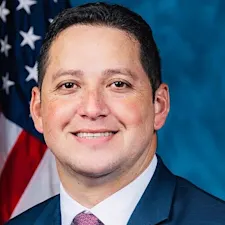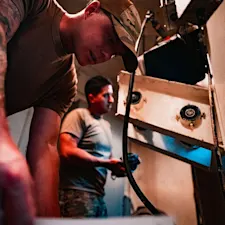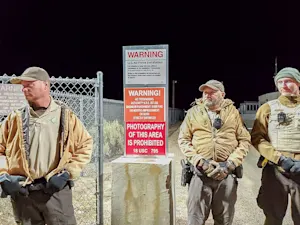
Karoline Leavitt Faces Fiery Questions Over East Wing Demolition
The White House East Wing is in ruins, and the administration's spokesperson is on the hot seat. Karoline Leavitt reportedly faced a barrage of questions during a recent press briefing about the sudden demolition of the East Wing to make way for President Donald Trump's $250 million ballroom. The demolition, which began in October 2025, has sparked a mix of admiration for the bold renovation and concern over the loss of historic architecture and the lack of public transparency.
East Wing Demolition Underway Despite Earlier Assurances
The demolition started on October 20, 2025, with heavy machinery tearing down parts of the East Wing, the section of the White House that houses the first lady's office and staff. Dramatic images reportedly showed the building reduced to rubble, a stark contrast to earlier statements from the White House that the project would not interfere with the existing structure. President Trump had previously insisted the ballroom addition would be "near it but not touching it," as reported by CBS News, and that the East Wing would be "fully modernized" without demolition, as reported by Daily Mail.
At the press briefing, CBS News reporter Weijia Jiang pressed Leavitt on this apparent contradiction. Jiang asked if the president could "tear down whatever he wants," referencing the ongoing demolition, as reported by Mediaite. Leavitt responded by citing a longstanding legal opinion from the National Capital Planning Commission (NCPC) that demolitions do not require the same oversight as new construction. She pointed to historical precedents, including past presidents who had altered the executive mansion, and showed photos of previous White House renovations dating back to the early 20th century.
Legal Opinions and Oversight Questions
Leavitt emphasized that the administration is following the NCPC's legal opinion, which holds that submissions are only required for vertical construction, not demolition. She said, "It's not the president who came up with the legal opinion. That legal opinion has been held by the NCPC for many years," as reported by Mediaite. She also reassured that the East Wing would be "more beautiful and modern than ever before" once the project is complete.
Leavitt added that the current briefing room was once a swimming pool, and that "there have been presidents who have torn down the executive mansion," as reported by Mediaite. She showed photos of the West Wing construction from 1902 and 1934, highlighting that demolition and rebuilding have historical precedent. "Look at that rubble! How did that rubble get there?" she asked, holding up a photo.
However, the National Trust for Historic Preservation, a nonprofit chartered by Congress to protect historic sites, has urged a "pause" on the demolition, as reported by CBS News. In a letter addressed to the NCPC, the National Park Service, and the Commission of Fine Arts, the Trust expressed concern that the new ballroom's size and height could overwhelm the White House and disrupt its classical design. The Trust called for the project to undergo the legally required public review processes before proceeding further,
Private Funding and Project Scale
The ballroom project is fully funded by private donations from major corporations, including Apple, Microsoft, and Coinbase. Trump has touted the project as costing "zero" taxpayer dollars, as reported by CBS News, a claim supported by the White House. The ballroom is planned to be significantly larger than initially announced. It will expand from 90,000 square feet to a size that can accommodate 999 guests, up from the original estimate of 650. It will feature bulletproof glass windows on all sides and serve as a venue for state dinners and other official events.
Despite the scale and cost, the White House has been criticized for the lack of public notice and transparency. ABC News chief White House correspondent Mary Bruce confronted Leavitt about the decision to demolish the East Wing without informing the public. Bruce pointed out that the president had initially promised the project would not interfere with the existing structure, yet demolition was already underway. Leavitt, reportedly stammering at points, said, "With any construction project, changes come. And we have informed all of you. We've been keeping you apprised of this project. We've shown you the renderings. And if you look at the renderings, it's very clear the East Wing was going to be modernized," as reported by Daily Mail. Bruce interrupted to note that "modernizing and tearing down are two different things." Leavitt replied that the plans changed after the president heard counsel from architects and construction companies who said demolition was necessary for a strong and stable structure. She added, "The president wants to do right by the people's house. And so that's exactly what he's doing. It's going to be, again, like I said, much more stable, strong, secure, and more beautiful than ever once it's complete."
Clash Between Messaging and Reality
Leavitt's earlier statements now stand in stark contrast to the reality of the East Wing's demolition. This tension between official messaging and on-the-ground facts has fueled skepticism among preservationists and the public. Leavitt attempted to deflect by showing historical photos of White House renovations, including rubble from the 1934 West Wing expansion, suggesting that such changes are part of the building's history.
What Lies Ahead for the East Wing and the Ballroom
The East Wing demolition marks the first major structural change to the White House since renovations ordered by President Harry Truman in 1948, as reported by the Daily Mail. The project aims to modernize the space and provide a grand ballroom for official functions, a feature that previous presidents have long desired but never realized. Trump has framed the ballroom as a legacy project, promising it will host parties for generations to come.
Yet, the debate over historic preservation, legal oversight, and public transparency continues. The National Trust's call for a pause highlights the unresolved questions about how such a significant alteration to a national landmark should be managed. Meanwhile, the White House maintains that all legal requirements are being met and that the project will enhance the historic site.
For now, the East Wing lies in tatters, a physical symbol of the clash between bold renovation ambitions and the weight of history. As construction progresses, the nation watches closely to see how the White House balances modernization with preservation, and how the administration navigates the scrutiny that comes with reshaping one of America's most iconic buildings.
References: White House begins demolition of part of East Wing for Trump's ballroom | Karoline Leavitt Dances Around East Wing Demolition Question | White House erupts after ABC News reporter grills Karoline Leavitt about surprise East Wing demolition


